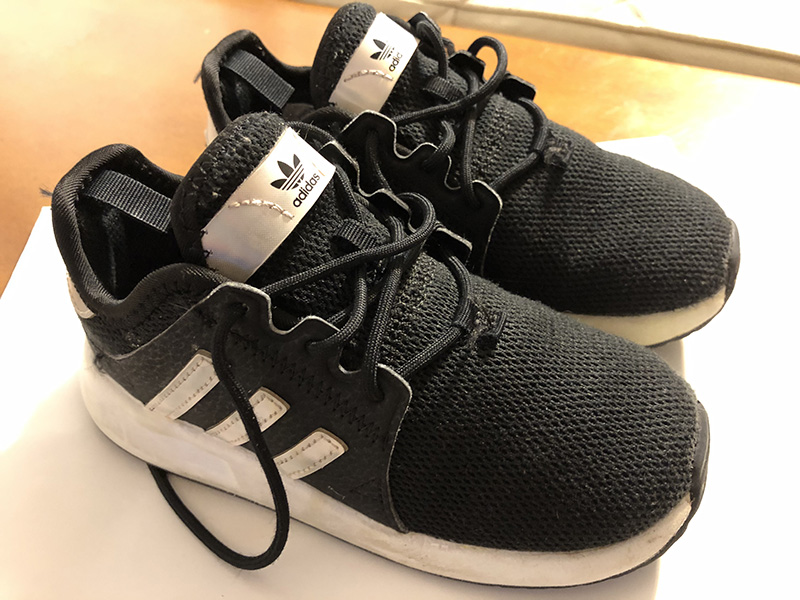Alex started struggling to walk around age 2. And we were thrilled. It was hard to believe that he could almost walk. As you all might already know, getting Alex to walk was an involved process at every step of the way. Children with Down Syndrome have “low muscle tone,” so virtually every physical stage takes longer. (This low muscle tone extends everywhere – even including mouth and swallowing – making it much more difficult to chew and swallow food.) And as it turned out, Alex would need walking assistance in the form of ankle braces.
Getting Alex to hold his head up took a long time. Rolling over took a long time. Sitting unassisted took a long time. Crawling took a long time. And he had to learn to crawl. We had to move his arms and legs in a way that would teach him to crawl. Then he could stand. Then he could stand and move with a push-toy. Then he could take a few steps. But every stage of the process took a lot of intentional work. I had wrongly assumed that a child would just learn this stuff on his own – by natural instinct or something. But I was wrong.
When Alex started walking he was a little shaky – as all children are, I’m sure. But after a few months it was clear to me that his ankles were turning in, and it looked like a very unnatural, unstable and potentially harmful walk. I mentioned something about this during one of our regular visits to the UVa Developmental Pediatrics Clinic. Our doctor agreed that Alex pronated and gave us a prescription for ankle braces and a regimen of physical therapy.
The process of ordering braces was simple. The orthotist (Indi Hewavita from Blue Ridge Prosthetics & Orthotics) watched Alex walk and then measured Alex about two dozen different ways. Indi showed us basically what the brace would look like, and Alex selected the cool sports theme graphic design.
A week or two later we were back in Indi’s office for the fitting. Alex wasn’t wearing socks – my mistake – and Indi went through the process anyway. But Alex was not having any of it. There was no way anyone was going to put braces on his feet. So Indi was super patient and just let Alex hold and feel the braces – the Velcro straps and the smooth hard brace. Indi helped Alex touch all of it, and held it against his legs and his feet and eventually Alex allowed him to put the braces on his feet. I was genuinely touched by the care and kindness and thoughtfulness that Indi gave Alex.
I said something like “Man, you’re amazing,” and he said “No, I’ve just got four kids.”
Indi told me that the braces need to be tight to be effective. They should leave a red mark when they are removed. No bruises, no blisters – but red marks. They probably needed to be tighter than I expected. The toes stick out of the braces, so they are not being pinched or smashed. The tightness must be felt around the main body of the foot.
The ankle braces have really helped Alex’s walk. He was immediately more stable and less wobbly. The plan was to work Alex up to eight hours of wearing braces per day. And do a twice a week physical therapy to improve his overall strength. Alex will have to wear braces indefinitely. The Physical Therapist at the Developmental Pediatrics Clinic said Alex would probably have to wear them as long as he was physically growing. I took this to mean that Alex would wear braces for maybe 20 years or longer.

After eight or ten months we’re still working up to eight hours every day. He usually wears his braces for about five hours, and there are some days when we don’t put them on him at all. He has adjusted well to them, although there are days when he refuses to wear them. They are difficult to get on if Alex is kicking and screaming, and I don’t think one person can do it alone. But mostly he is fine putting on his braces, and we don’t notice them until we take them off in the evening. Alex would much rather be barefoot than wearing braces, but I think they are definitely helping his walk and ankle strength.
Indi offered some shoe guidelines – like buying larger shoes to accommodate the braces. I have heard that finding appropriate shoes was a problem for many parents. Shoes generally are not wide enough, so sometimes people have to buy special shoes. Olma is very good about going to yard sales and finding inexpensive clothes and toys and such for Alex. I think she probably has a collection of items for Alex for the next ten years. Anyway, we tried on a couple of pair of shoes, and she had a pair that worked very well with his ankle braces.

These are just regular Adidas kids athletic shoes, but they have a very wide base, and they slip easily over the braces. You can see how wide the base is from the top photo. Indi said he preferred a lace-up shoe to Velcro straps, so I guess Olma planned pretty well.
I think the key to progress is consistency. We just have to keep doing it day after day. It eventually becomes a routine – a lifestyle – and is part of our activity. We wear the braces, we wear the shoes, we do the physical therapy. We won’t see much of a change from day-to-day or even week-to-week, but over time, we can definitely see growth and progress.
